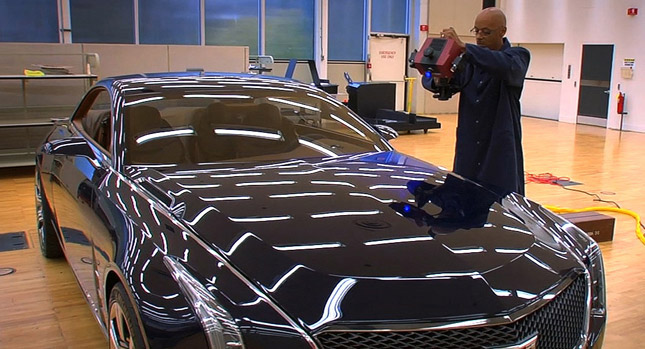While it looks like we won’t be seeing the Elmiraj turning into a production car, Cadillac continues to tell us about its well-received luxury concept. This time, is has revealed details on how it used an advanced measuring technology called structured-light 3-D scanning for its development.
Often used for fine art restoration and reproduction, 3-D scanning uses projected light patterns and an advanced camera to capture three-dimensional shapes. The shapes are then converted into math data that can be manipulated in digital modeling programs. The Cadillac Elmiraj coupe concept benefitted extensively from this digital mapping technology.
Thanks to 3-D scanners, designers can quickly reverse engineer and update the master math model, and then apply them to the physical model by milling the clay.
GM has used 3-D scanning since 2001, but the Elmiraj is the first drivable concept car for which this technology has been used to validate nearly every pattern, mold and part during each phase of the vehicle build.
“With the Elmiraj, we were able to use 3-D scanning as the bridge between traditional hand-sculpting teams who work in clay and digital modeling design teams who work in math,” said Frank Saucedo, director of General Motors’ North Hollywood Advanced Design Studio.
Not only that, but 3-D scanning allows designers to revert to a previous design phase. “A scan can even reveal the need to take a step back to a previous iteration, and 3-D scanning makes it relatively easy to do,” said David Bolognino, director of GM Design Fabrication Operations.
Probably the best part of 3-D scanning is that it makes possible the transition from a scale model to a full-size model in less than one week, speeding up the design process.
Scroll down to watch how 3-D scanning works from the video posted below.
By Dan Mihalascu
VIDEO



